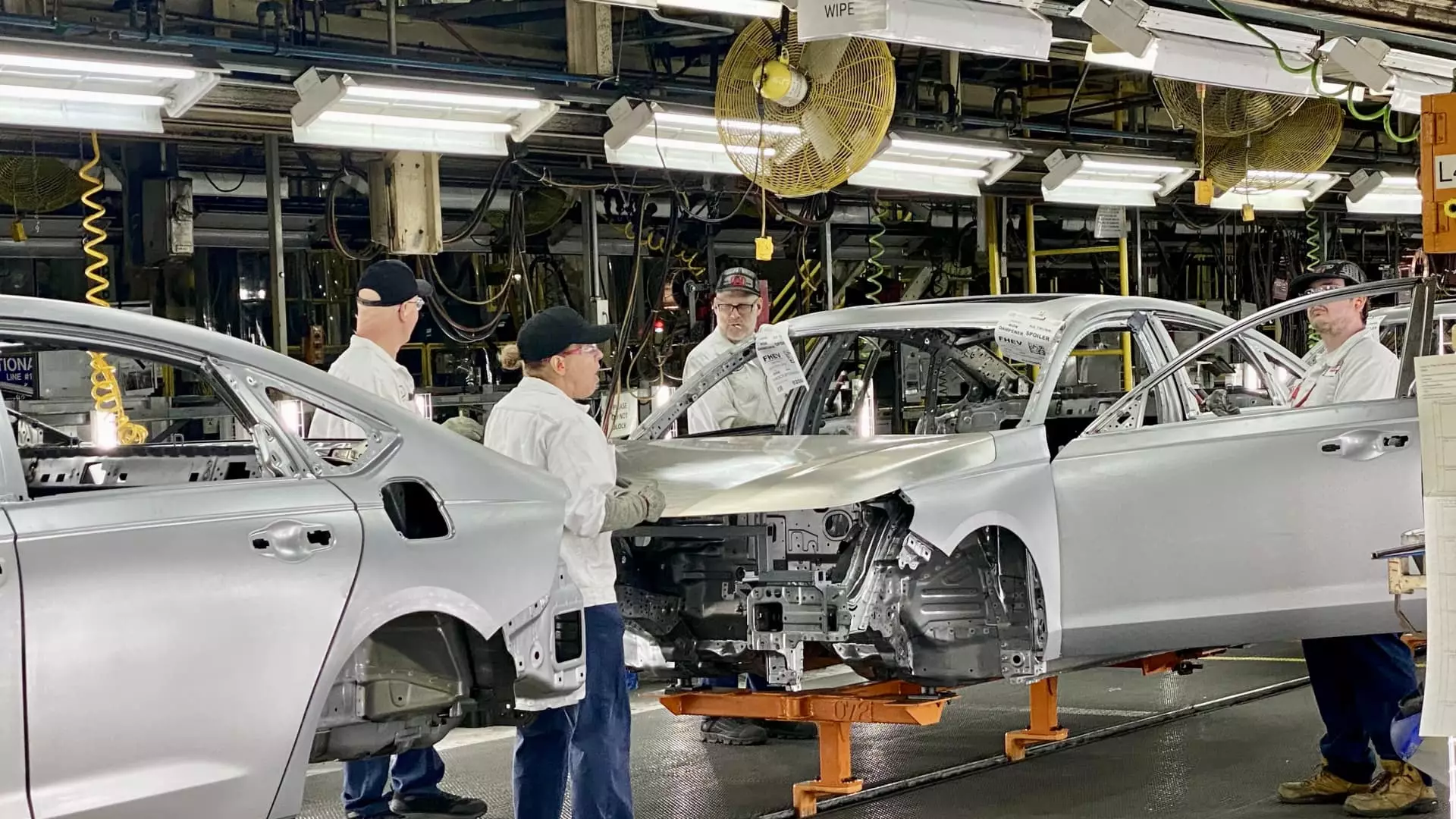In a strategic pivot that underscores the changing landscape of automotive manufacturing, Honda Motor Company is setting the stage for the next generation of electric vehicle (EV) production in Ohio. In a notable departure from tradition, the 75-year-old Japanese automaker is making substantial investments in the Midwest, with plans to enhance its Marysville Auto Plant as part of a larger $1 billion initiative aimed at transitioning towards electrification. The implications of this move stem from a broader desire to streamline production while addressing the burgeoning demand for sustainable vehicles.
Investment Overview and Technological Advancements
Originally planned at $700 million, Honda’s revised investment of over $1 billion signifies its commitment to developing cutting-edge technology in the U.S. This transformation includes the installation of six large-scale “giga presses”, technologies popularized by Tesla, used for die-casting components such as battery packs. These colossal machines, akin to small houses in size, allow for monumental efficiencies in manufacturing by consolidating multiple parts into a single unit, thereby minimizing assembly time and costs. This innovative process, termed ‘gigacasting’, is perceived as a game-changer due to its potential for operational cost reduction, freeing up resources to innovate further.
Moreover, the establishment of a new cell manufacturing system for battery cases presents Honda with an opportunity to integrate their EV production into a cohesive system. Positioned alongside the planned $3.5 billion battery plant, this emerging EV hub is not merely a response to market trends but a reshaping of Honda’s operational model in a strategic location that traditionally serves as a cornerstone for automotive assembly in the United States.
Historically, significant upgrades in Honda’s manufacturing processes began in Japan before being disseminated globally. However, the current initiative prioritizes Ohio as the epicenter of Honda’s evolving production methodologies. This move aligns with broader economic policies from the Biden administration aimed at boosting domestic manufacturing capabilities and reducing dependency on imported vehicles amidst rising tariffs and trade uncertainties.
Honda’s Marysville facility, a longstanding production site, is forecasted to produce approximately 220,000 vehicles annually, which positions it as a pivotal player in Honda’s integrated supply chain. The plant will not only continue to manufacture conventional vehicles but will also adapt its lines to accommodate hybrids and fully electric models, reflecting an ambitious plan to respond to consumer demand for eco-friendly options.
Given the slow adoption rates of electric vehicles in the United States compared to its competitors, Honda’s entry into full-scale EV production comes with both urgency and caution. While Honda has already rolled out models like the Honda Prologue and the Acura ZDX, these vehicles are manufactured by General Motors, indicating a delayed yet strategic entry into the market. The anticipated launch of Honda’s all-electric Acura RSX crossover represents a significant milestone, as it marks the company’s first internally produced EV.
As Honda embarks on this electrification journey, the efficiencies created by the newly instituted flexible manufacturing ‘cells’ promise to enhance production resilience. Unlike traditional assembly lines, this approach allows for parallel processing, thereby reducing interruptions and enhancing overall productivity despite potential challenges in parts supply or production.
Honda’s foray into electric vehicles aligns seamlessly with its broader sustainability objectives established to achieve carbon neutrality by 2050, coupled with plans to exclusively sell zero-emissions vehicles by 2040. This commitment bears greater significance as many competitors reassess their environmental goals amidst changing market dynamics and regulatory frameworks.
The investment in Ohio also focuses on emission reductions and waste minimization through innovative manufacturing practices. For instance, the utilization of recyclable aluminum for battery packs not only showcases Honda’s commitment to sustainability but also underpins a strategy to create closed-loop systems within their supply chain.
The transformations underway at Honda’s Ohio facilities elucidate a decisive shift in both strategy and philosophy as the company navigates the complexities of the electric vehicle landscape. As Honda embraces this evolutionary phase, the potential for creating value through enhanced manufacturing processes, environmental stewardship, and technological integration is substantial.
This initiative in Ohio signals not just a necessary adaptation to market realities but heralds Honda’s second founding, redefining its legacy within the automotive industry. With ambitious goals and innovative methodologies, Honda is poised to redefine itself as a formidable player in the realm of electrification and sustainable mobility, setting global standards for the future of automotive manufacturing.

